Go back to Oregon Cascades page.
Summary
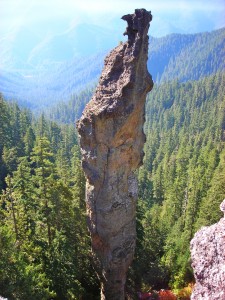
Turkey Monster in the Menagerie Wilderness.
Some History

Turkey Monster as seen from the Rabbit Ears.
Of the three, Eugene Dod is the guy who first found this tower. His suggestion was to name the tower “Turkey Necked Monster”. That idea was defeated by Dave and the present name was thus settled on.
.
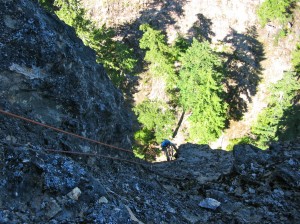
Shirley jugging P3 of Dod Route.
Can’t add much to Turkey Monster–mainly I remember the long approach through thick rhododendron thickets (the logging road hadn’t been pushed to where it is now) and prussiking (no jumars then) on the stretchy goldline ropes (you’d prussik a mile it seemed and still be where you started–it was always scary to transfer from a hanging belay to the rope because you’d drop so far if you didn’t get all the stretch out). Mainly I remember worrying about how we’d get down. Eugene really wanted it–I thought it too rotten and dangerous.
2006

A gift from a pissed off yellow jacket.
2007

Shirley and Pat chilling atop P2 of Dod Route.
Given our experience from the previous fall, the approach two days ago went quickly. The bushwhack to the base is not terrible though the very last part is steep and so we fixed a line and rapped in (figuring we’d be done late). With the exception of the last pitch (low 5th slab), we aided the entire line. Aid was hammerless though I did use a cheater stick on P1 to get past a blank section (since my head was not into stepping out of the aiders). With exception of one new-ish looking bolt above the crack section on P1 and one very new bolt at P2 belay (Tyler? Much thanks!!!), all other fixed gear was as one would expect. We ran P1 and P2 together given the condition of fixed belay anchors atop P1.
Rope drag was horrendous enough to notice even from the safety of the aiders. The crack at start of P2 proper does have some loose rock around it however it seems like you can get some bomber large cams in good rock. The real scary part was actually midway up P2 where the left side of the chossy crack is formed by a huge flake. Each time I’d gently step up onto a cam, I could almost feel it expanding (probably my imagination). Shirley cleaned and Pat jugged a free rope.
We used the lower of two belay stances (can see both from Turkey Point on approach) atop P2 where much gear was used to supplement the old bolts.
P3 is a super steep headwall on some very manky “bolts” (even by standards of P1) but none are missing. Highlight of the pitch is a 0.5″ hangerless stud with a slight downward orientation. Cheating past this point is not an option really as the “bolts” (seems like nails with tinfoil hangers, some nicely oxidized) feature tiny openings and getting a biner through takes some finagling.
Belay bolts at base of low 5th slab atop P3 were all old and so I continued to a sling belay 6 feet below the summit. Bleached tat was replaced – not sure when was the last time this summit had been visited but judging by the tat, it must’ve been a while? Shirley cleaned this pitch as well and Pat took a wild swing out of the belay into space when his turn to jug came. Given our lazy start from trailhead, the slowness of my leading, and the cluster f..ks at belays (not used to climbing with 3 people) the sun was getting low by the time we started rigging the rappels on the summit.
We used double 70 meter ropes. The first rap went from the summit back to our belay midway up the tower. Now this thing is really overhung – I expected to drop down below the summit slab and clip a few “bolts” on the headwall to keep myself near the wall. To my dismay, I discovered that I was not able to reach any bolts below the lip and (of course) the ends of the 70 meter lines were still dangling a significant distance above ground. I rapped till I was level with the upper P2 belay where I used a cheater stick to snag some tat and pull myself into the wall. This required some good timing as I was about 6 feet away from the wall and rotating back and forth like an idiot. I clipped the tat (as well as another piece or two below) and was able to then reach the lower P2 station where the mank had been reinforced by one new bolt.
The ropes (thankfully) pulled without additional excitement. One more double rope rap brought us back to earth.
It was dark by the time our junk was packed and Shirley started jugging the fixed line back up the slope. A moment of excitement came as the line dislodged a two-fist-sized rock and it came hurtling through darkness impacting two feet away from my torso. At that point I reminded my wife that we had a joint mortgage in our names and no life insurance policy. The uphill bushwhack was painful but uneventful. Thoughts of going to Smith on Sunday were nixed and we drove home stopping for a nap followed by breakfast at a Sherrys in Lebanon (?) at 3 in the morning.
As a side note, this was our friend Pat’s first time climbing in the Pacific Northwest and (other than some 25 foot practice run up a tree in a Portland park) his first time using jummars. Also, I’m not sure what the modern aid rating for this line is – if I were to guess, C2F? But who knows which of the fixed gear is capable of stopping a fall. It felt more serious than the Northeast Face on Steins Pillar (TR here) which has accumulated many new-looking bolts (another Oregon classic). In summary, I found this to be a great fun adventure outing but I’ve always liked these sorts of things.
Many thanks to Jim Anglin (Rest In Peace) and Tyler on cascadeclimbers.com for beta on this thing.
Photos
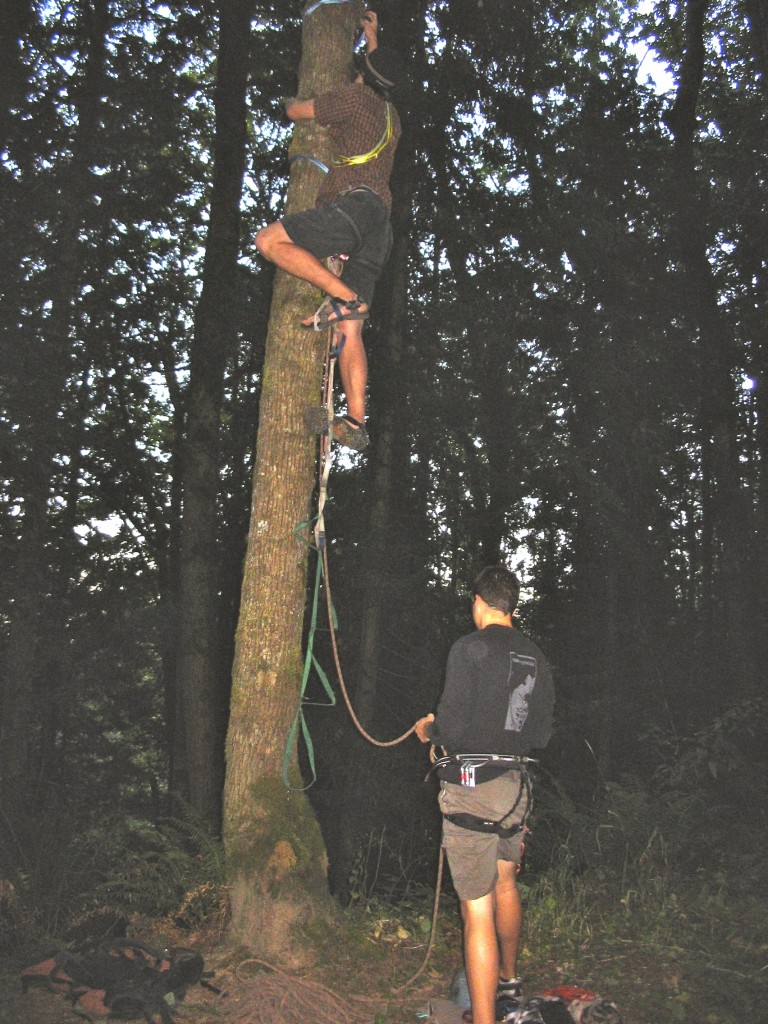
Leading the sustained Don't Drop The Chalupa (I-, C1-) belayed by our friend Pat. Undisclosed location in a PDX city park.
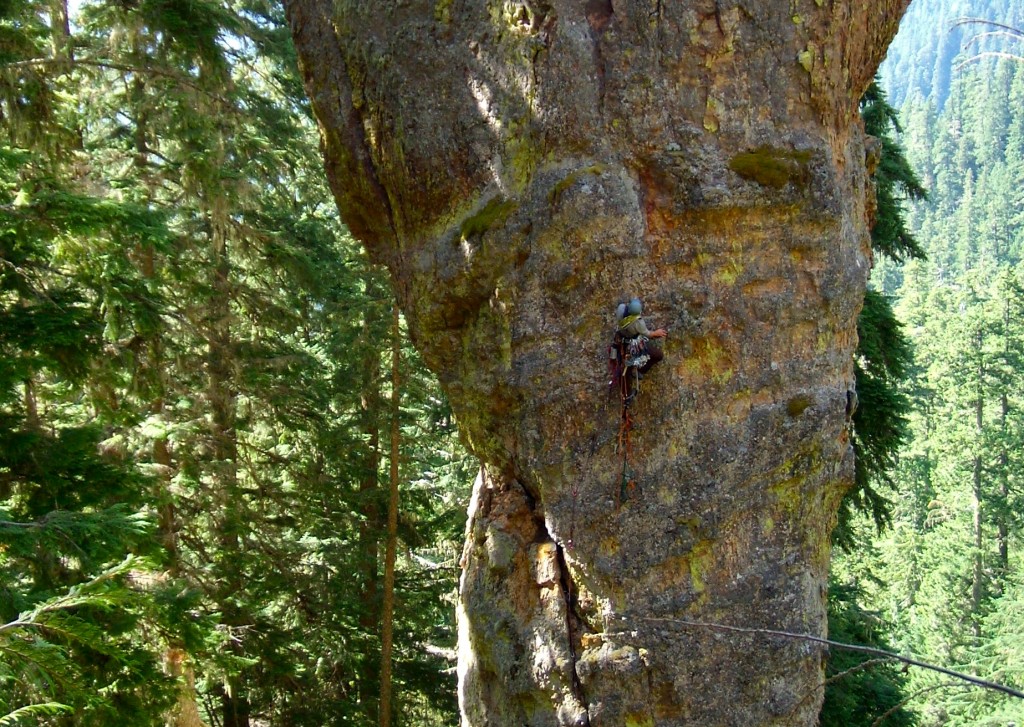
Leading pitch 1 of the Dod Route on Turkey Monster's north face (August 2007). EDIT IN: photo taken by our Nikon Coolpix set up on a tri-pod.
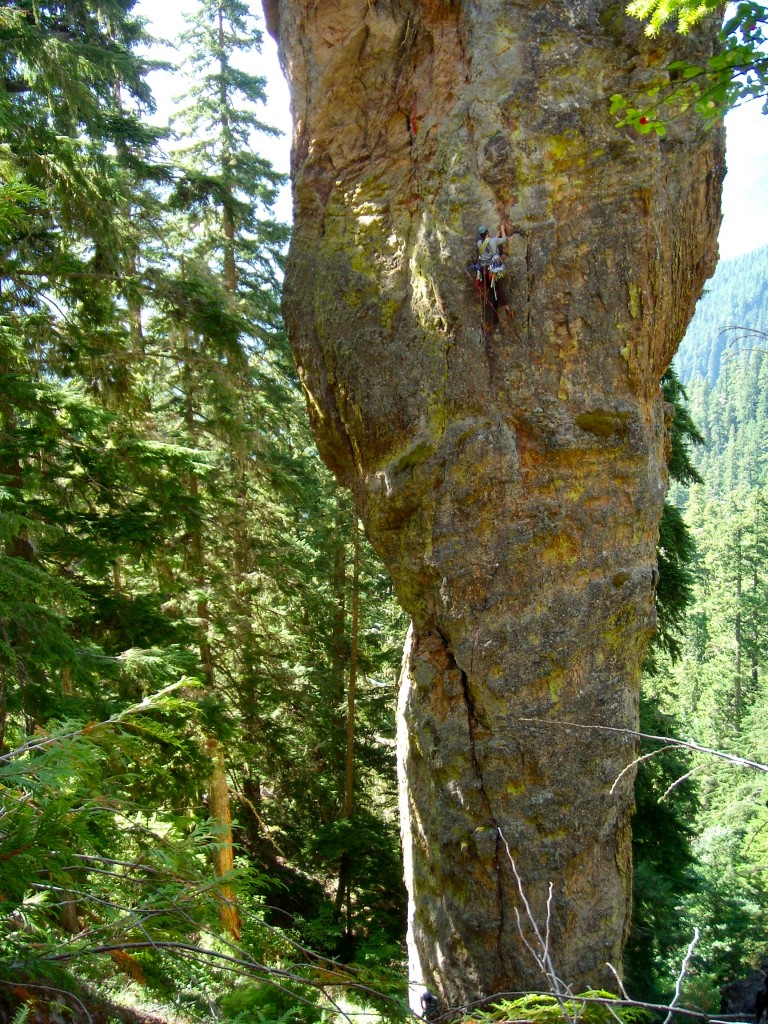
Leading pitch 1 of Dod Route on Turkey Monster. We combined P1 and P2 into one long (horrendous rope drag) pitch. Shirley's visible at the base belaying me (August 2007). EDIT IN: photo taken by our Nikon Coolpix set up on a tri-pod.
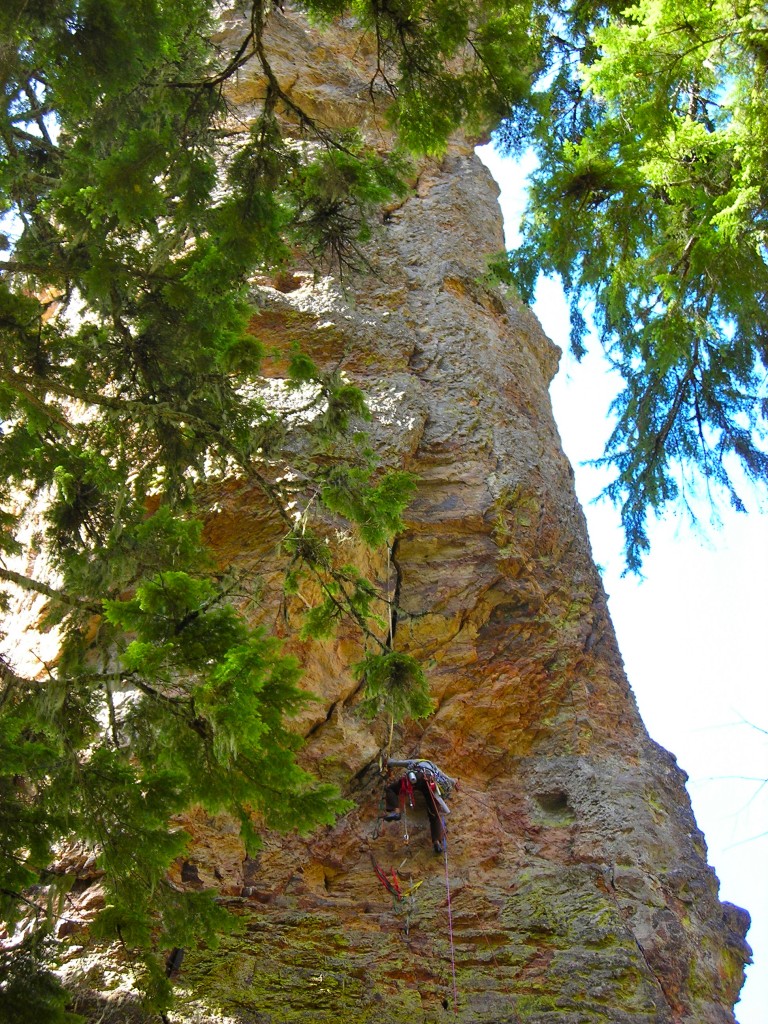
Leading past the anchors atop P1 of Dod Route. P2 continues up through the roof via wide crack (Aug. 2007). Photo by our friend Pat C.
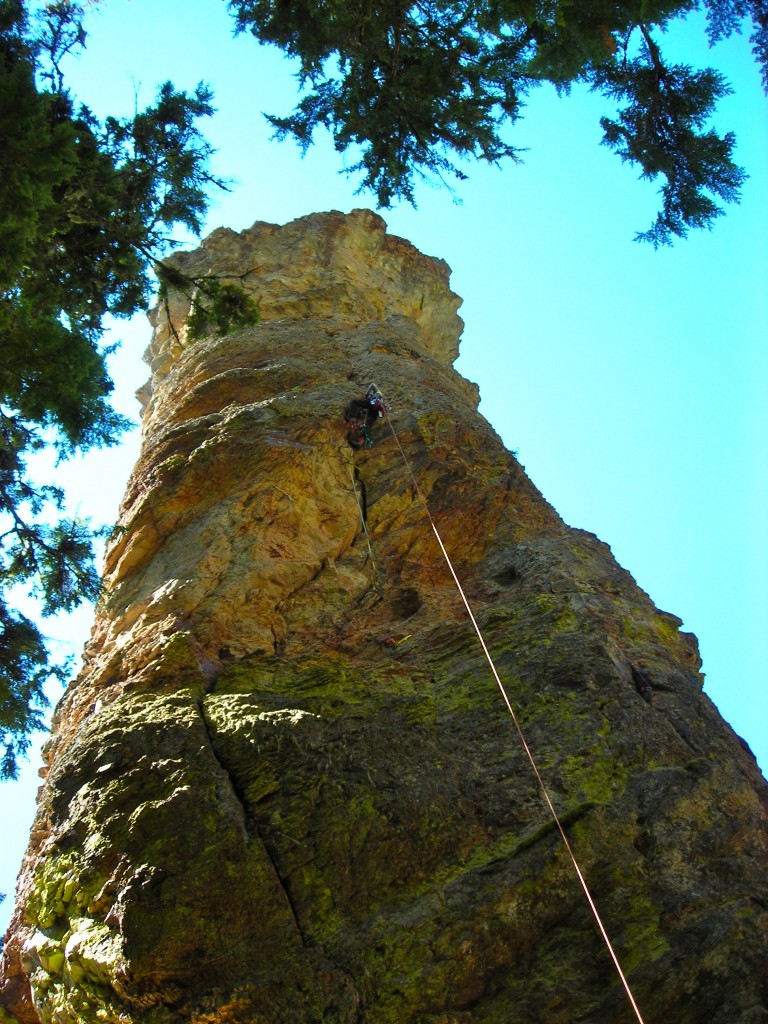
Leading the start of P2 of Dod Route on Turkey Monster. We linked P1 and P2 with much rope drag. P2 follows the wide crack through the roof. Photo credit: Pat C. (August 2007).
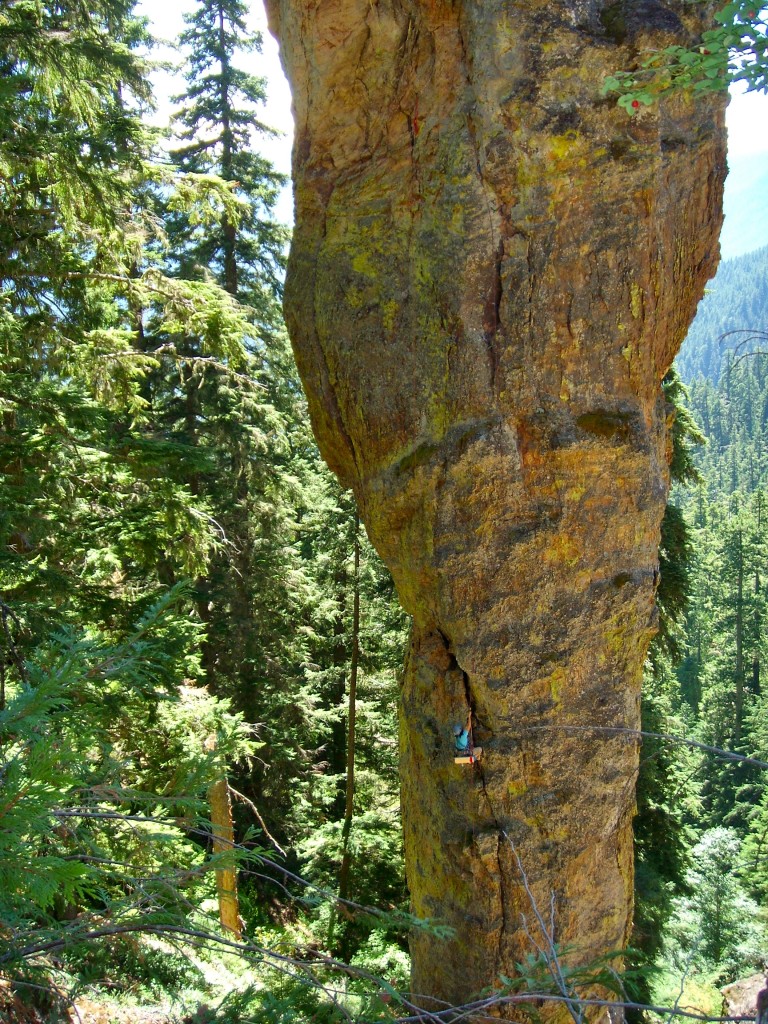
Shirley jugging our first pitch of Dod Route on Turkey Monster. We combined P1 and P2 (August 2007). EDIT IN: photo taken by our Nikon Coolpix set up on a tri-pod.
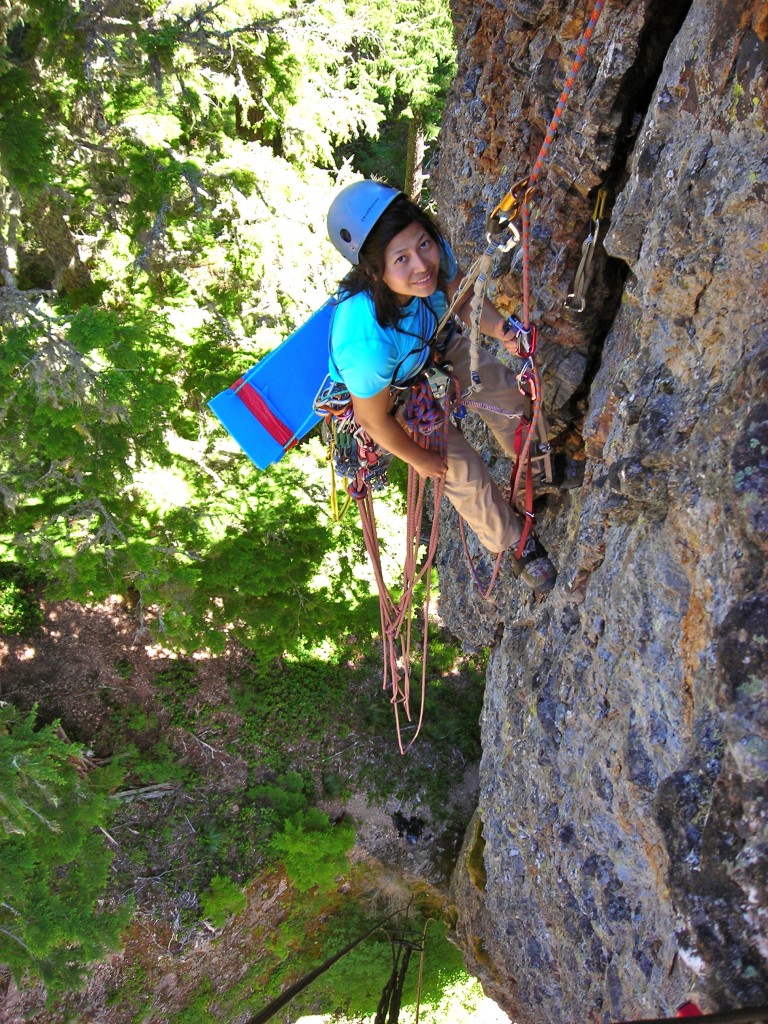
Shirley jugging P2 of Dod Route (our P1) on Turkey Monster. Photo taken by Pat C. who was jugging next door (Aug. 2007).
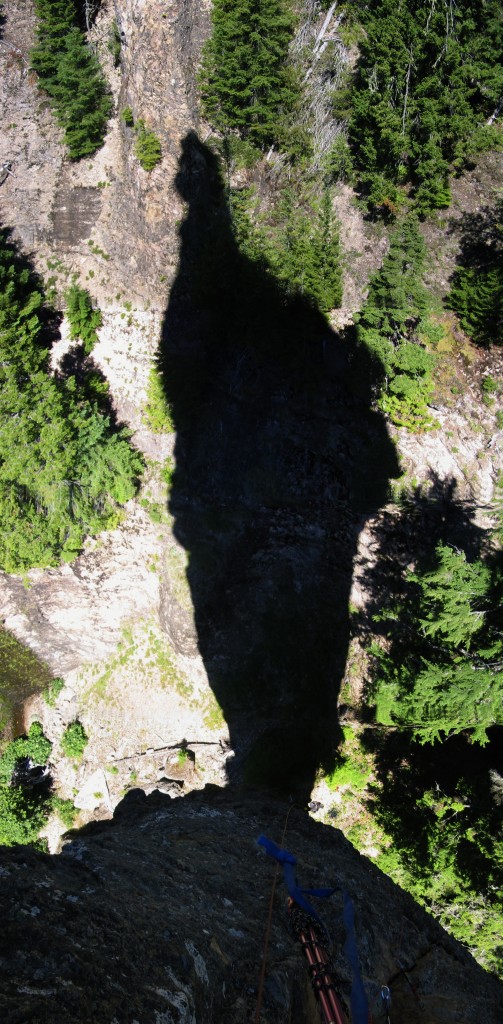
View down from top of P2 (our P1) of Dod Route on Turkey Monster. Shirley (blue helmet) and Pat (yellow helmet) are starting the long jug. Monster's shadow provides background (August 2007).
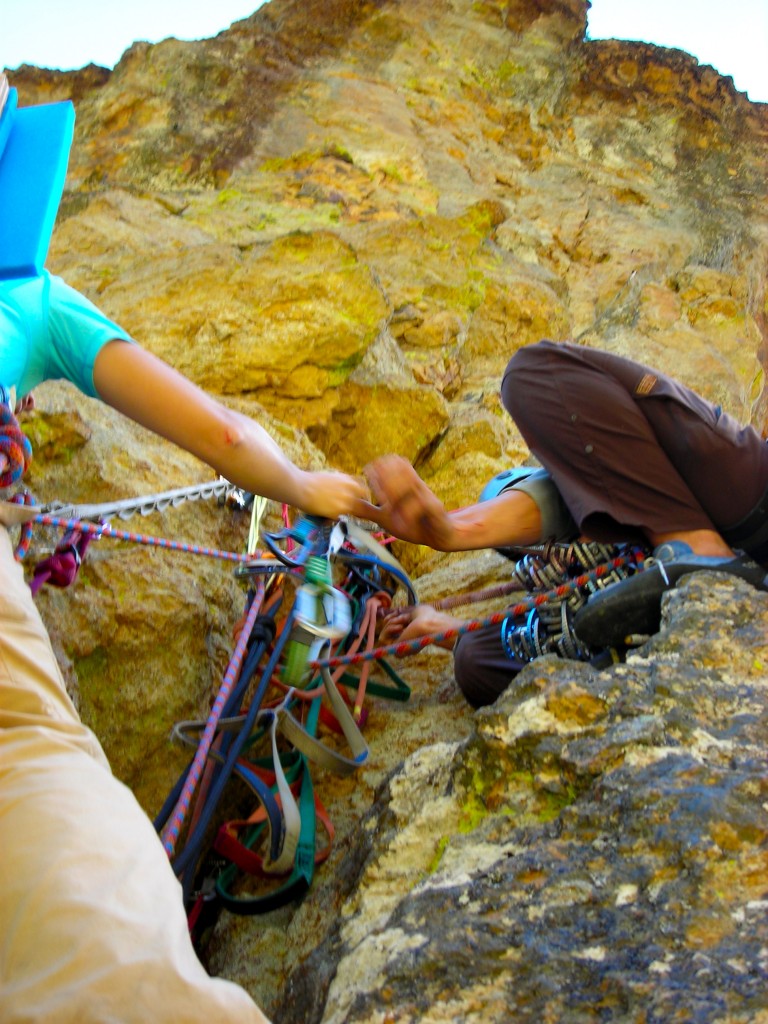
Gear swap atop P2 of Dod Route. Small stance for 1...hanging belay for all others 🙂 Steep headwall of P3 is above. Photo credit our friend Pat C. (August 2007).

Shirley and Pat hanging out atop P2 belay. This is the view down from the headwall pitch (August 2007).
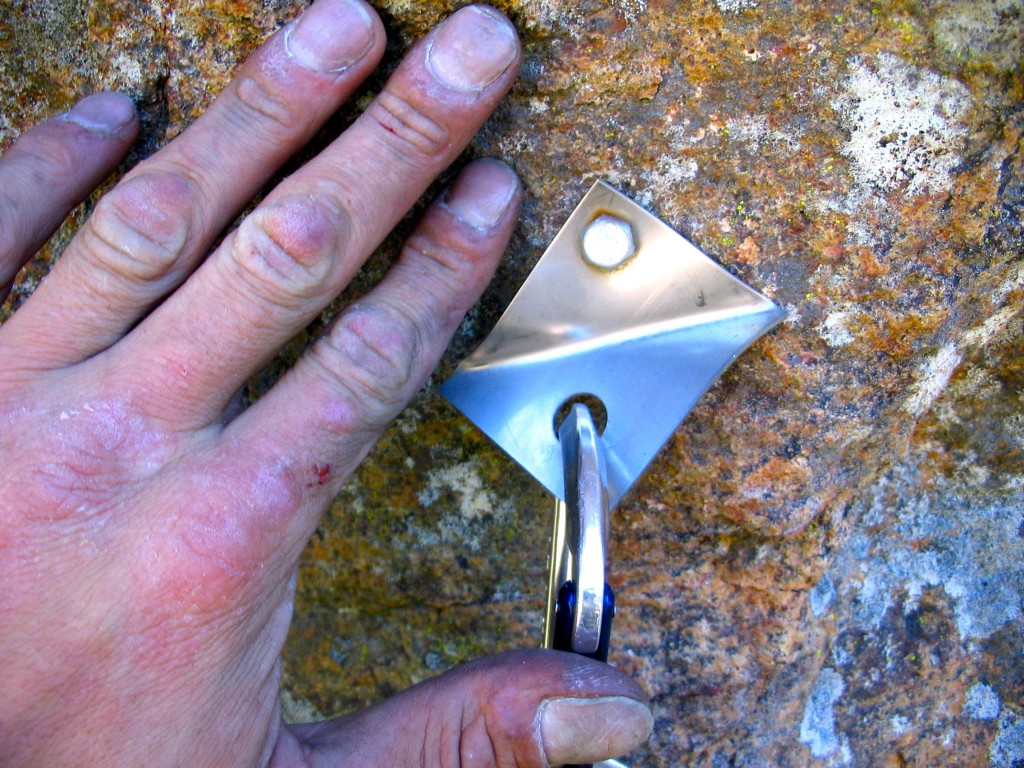
Pitch 3 bolt ladder (as good as they come) likely courtesy of FA party from late 60's? Submitted for TR. August 2007.

Leading the severely overhanging headwall pitch (pitch 3, our pitch 2) on Dod Route on Turkey Monster. Photo credit: Pat C. (August 2007).

A member of the bolt ladder on pitch 3 of Dod Route on Turkey Monster. Don't slip, don't slip, don't slip!! Submitted for TR. August 2007.
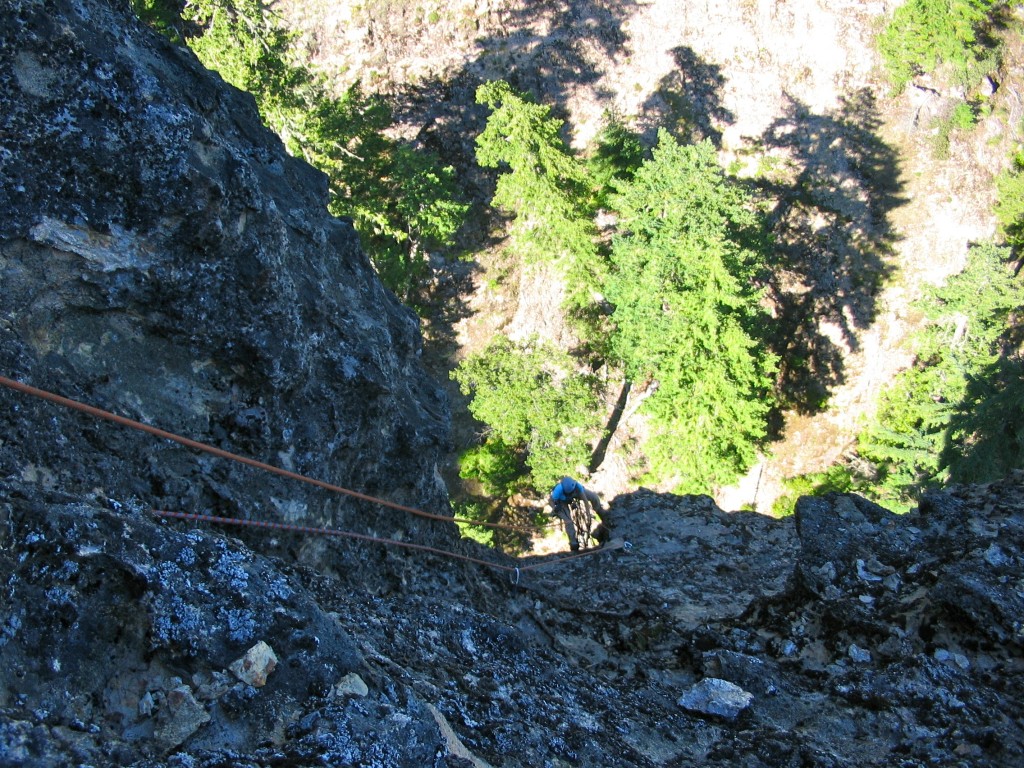
Shirley jugging over the lip of P3 headwall and onto the low 5th class slab that is P4 of Dod Route (August 2007).
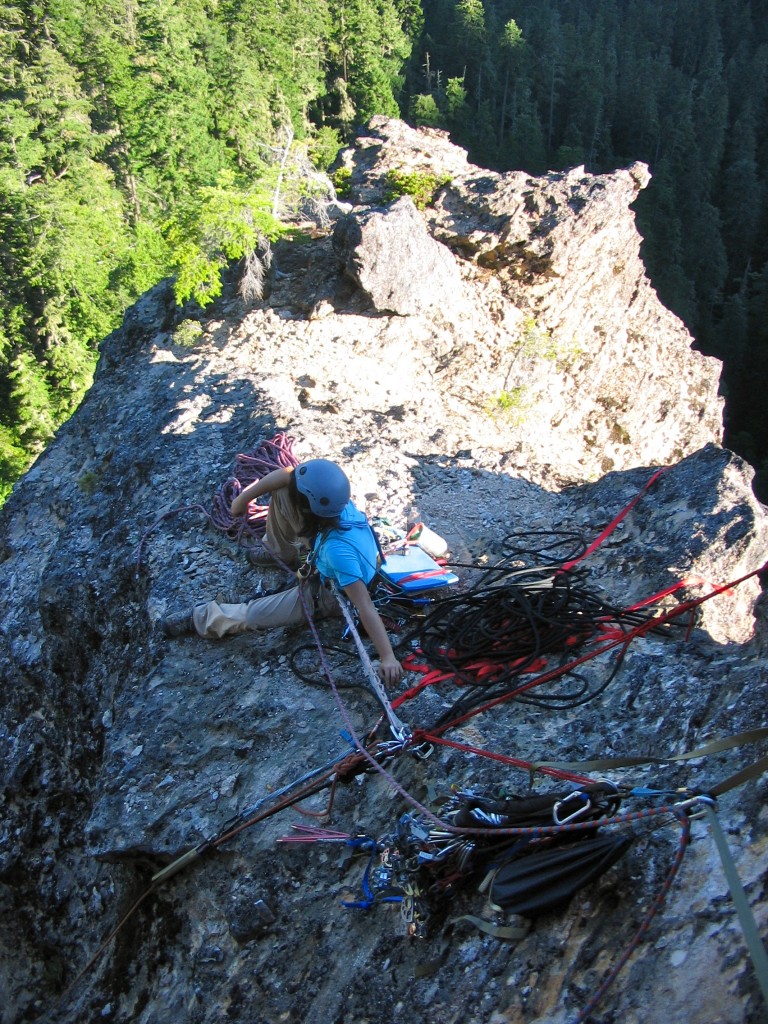
Shirley on the summit of Turkey Monster. This is actually about 8 feet below the top of the Turkey's head - a surprisingly large flat area (Aug. 2007).
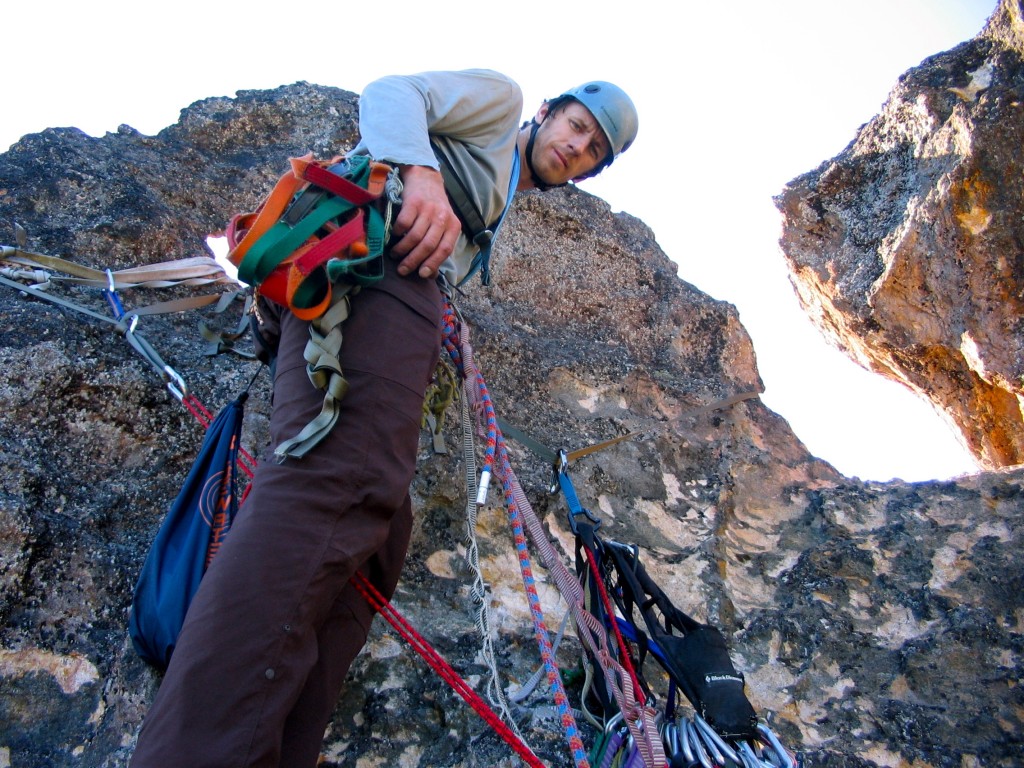
Yours truly on the summit of Turkey Monster tower. The summit belay/rap set up is behind me: a nice window in a somewhat thin fin of rock for slinging webbing (Aug. 2007).

Shirley rapping off the tower - somewhat a tricky descent given the severely overhanging nature of the faces (Aug. 2007).
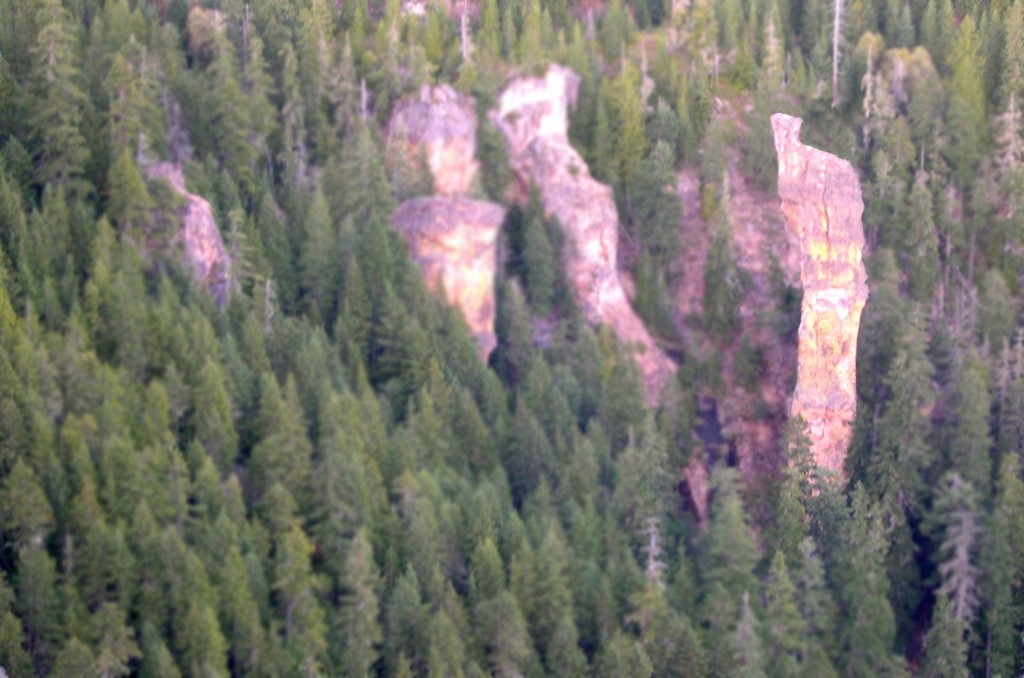
Turkey Monster as seen from the Rabbit Ears.
Go back to Oregon Cascades page.
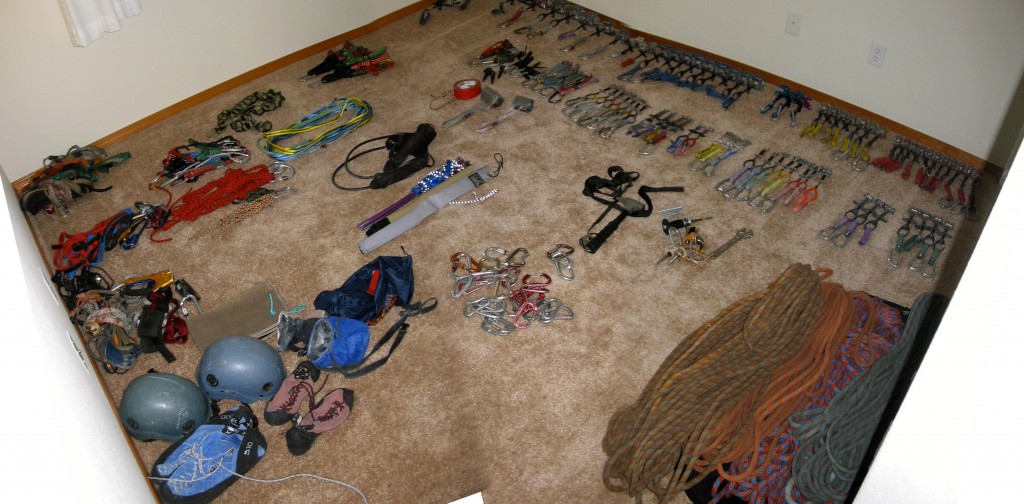
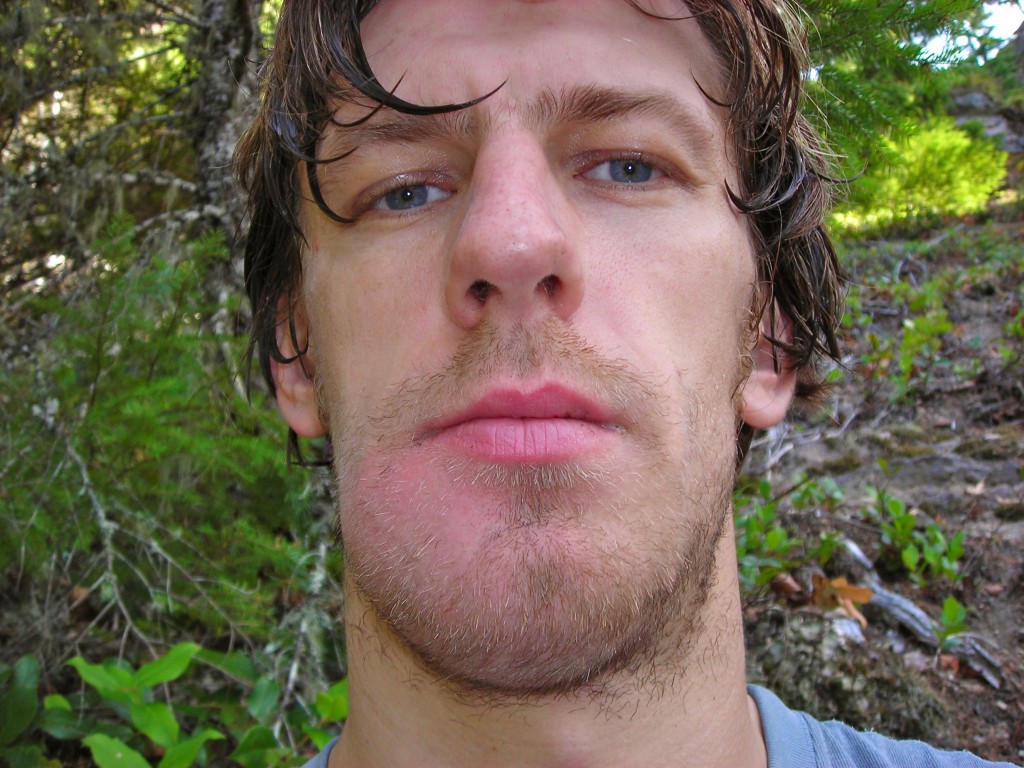

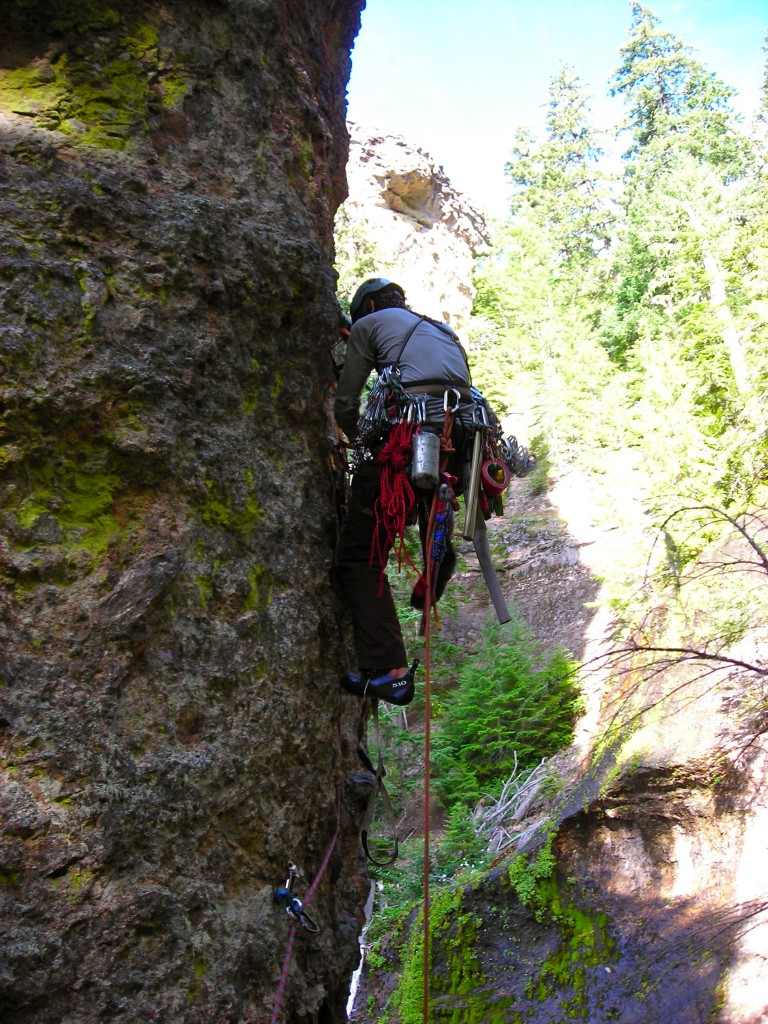

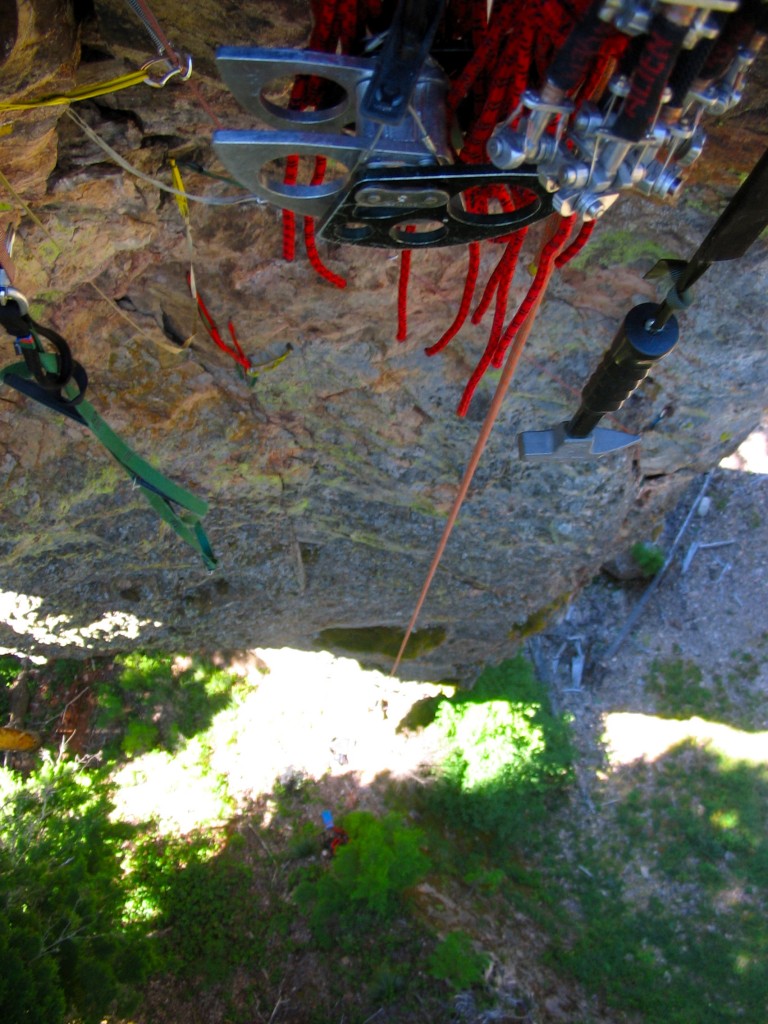

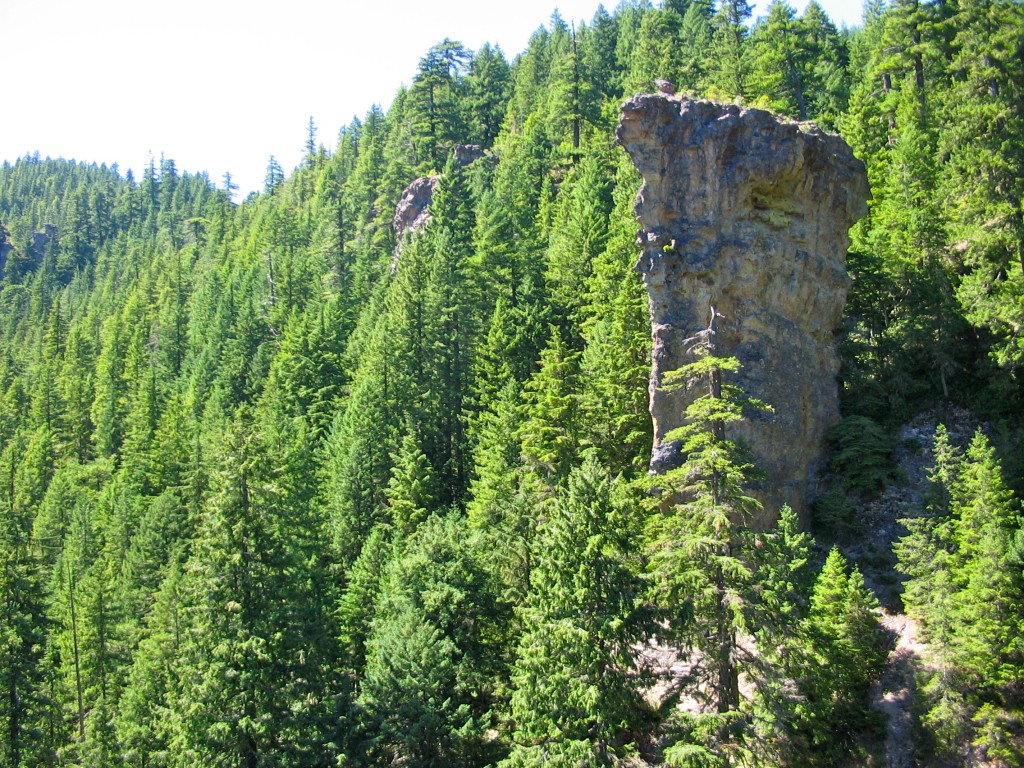
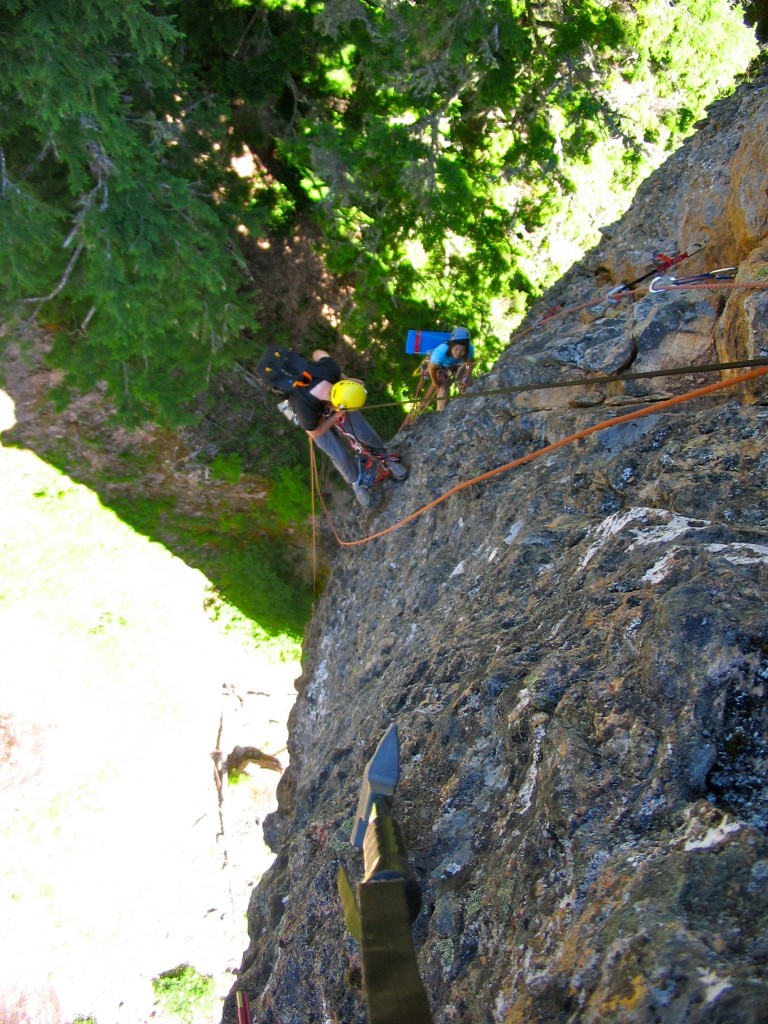
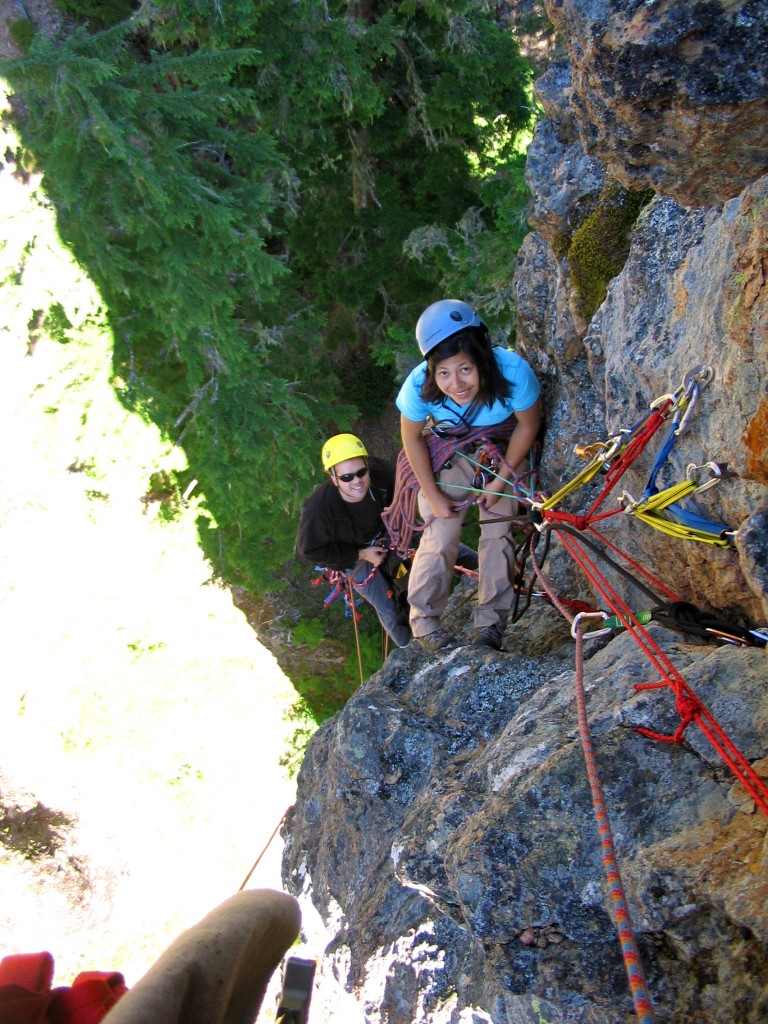
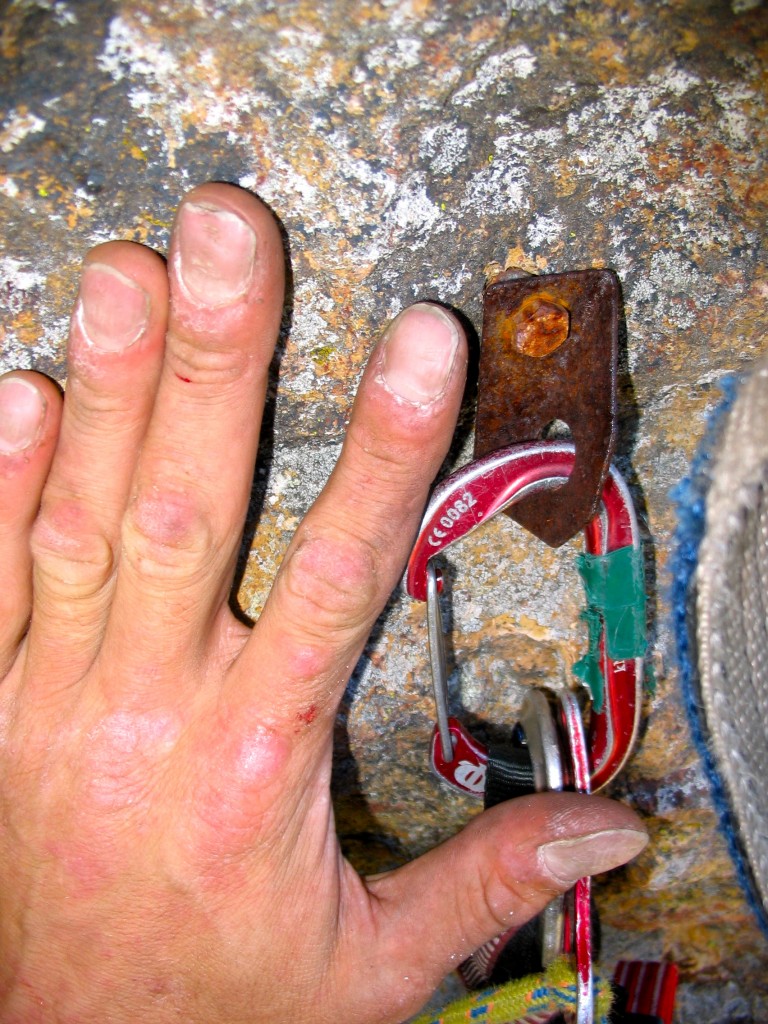

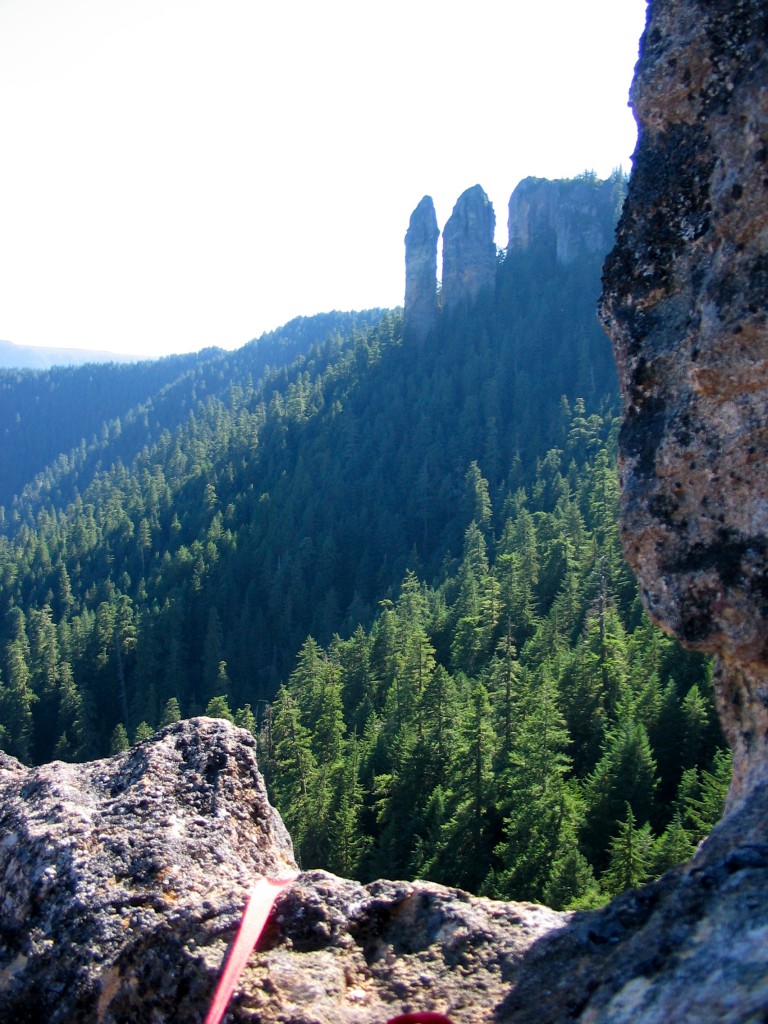
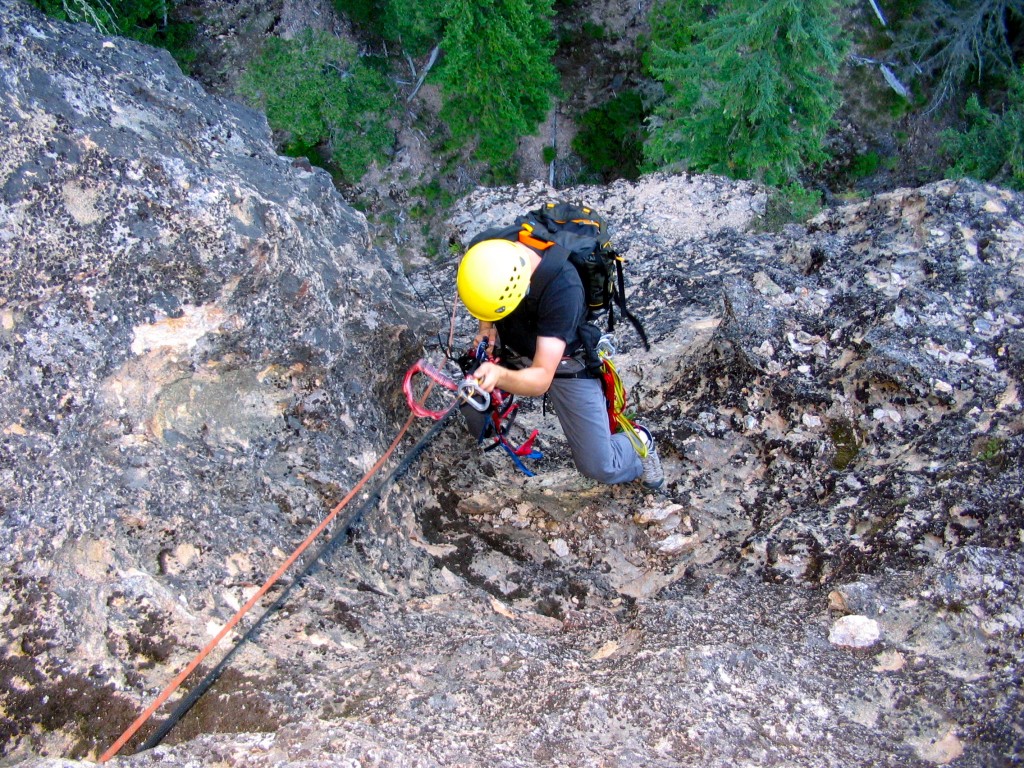
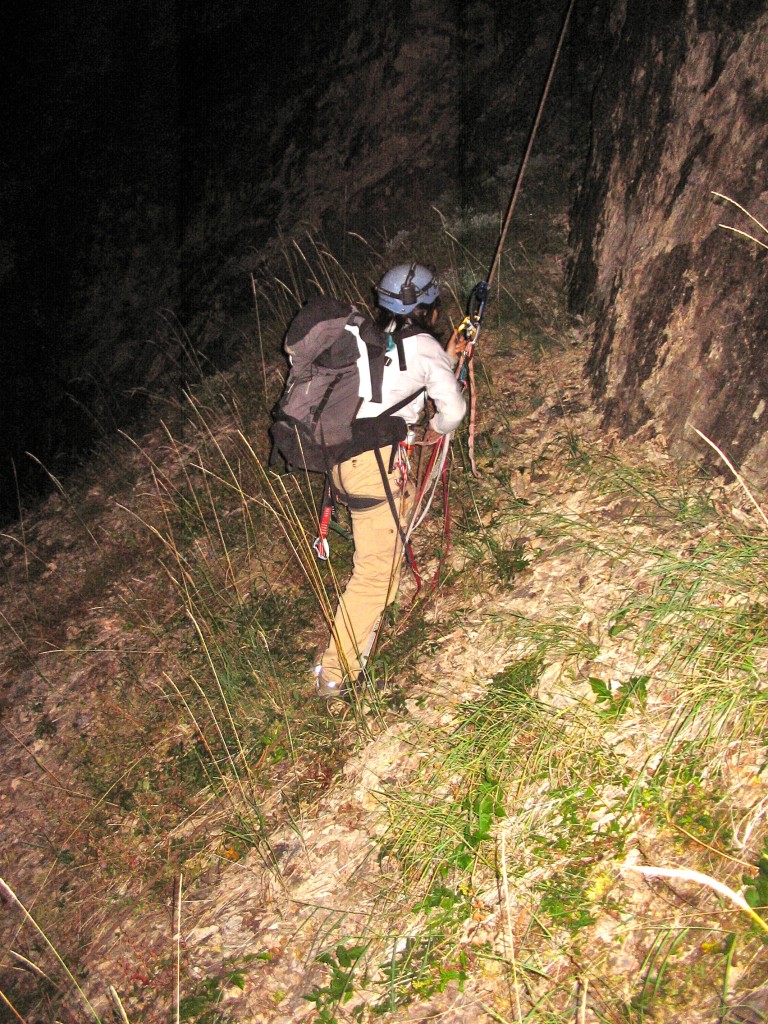
[…] Radeks Awesome Trip Report […]
Wayne, thank you very much! & thanks for the link on your Monster write up 🙂